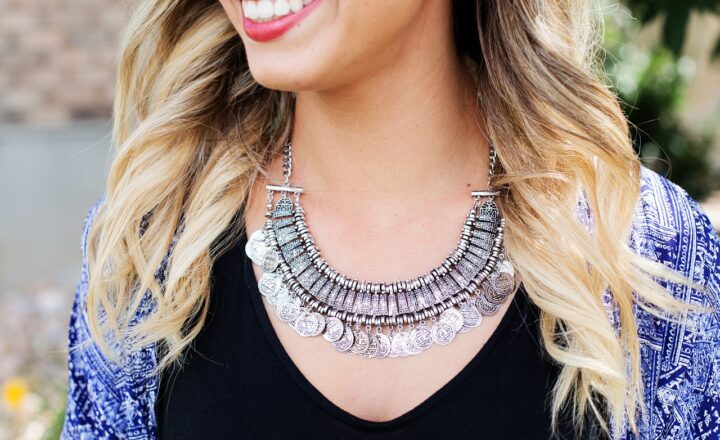How Silver Has Become a Symbol of Purity and Elegance in Jewelry Making
November 14, 2024

Silver has long been regarded as one of the most precious metals in the world, known not just for its economic value, but also for its unique properties and aesthetic appeal. Throughout history, silver has been intricately woven into various cultures and traditions, gaining a reputation as not only a medium for currency and trade but also as a timeless choice for jewelry making. In this article, we’ll explore how silver has become a symbol of purity and elegance in jewelry, tracing its historical significance, characteristics, and its enduring popularity in modern craftsmanship.
1. The Historical Context of Silver in Jewelry Making
Historically, silver has held a prominent place in various civilizations, symbolizing wealth and status. Ancient Egyptians adorned themselves with silver jewelry as far back as 3000 BC. The metal was treasured not only for its luster and malleability but also for its perceived connection to the divine.
In ancient Rome, silver became interlinked with societal structure, marking distinctions in rank and privilege. Roman elites flaunted elaborate silver jewelry adorned with gemstones, embodying both power and sophistication.
Moreover, silver’s contemporary use in jewelry can be traced back to various movements that revived or innovated traditional methods. Art Nouveau artisans and the Arts and Crafts movement of the late 19th century embraced silver as a material that embodied both beauty and artisanal craftsmanship.
2. Silver as a Symbol of Purity
Silver is often associated with purity and clarity, reasons that have played a crucial role in its use in jewelry. This is reflected in both its physical characteristics as well as its cultural implications.
Silver’s reflective quality has earned it a reputation as a symbol of inner clarity, often viewed as a mirror of one’s soul. As societies evolved, this association deepened; silver jewelry became a mark of purity in various cultures. For example, in many traditions, silver is used in ceremonial objects and ornaments to signify the purity of intention and thought.
The ancient association of silver with the moon enhances its representation of purity; both silver and the moon are thought to have cleansing properties. In modern times, this symbolism continues as individuals choose silver jewelry for significant life milestones, such as weddings, anniversaries, and graduations, reflecting both purity and transformative life stages.
3. The Physical Properties of Silver in Jewelry Making
From a material perspective, silver is ideal for jewelry making due to its unique properties. Among these are its malleability and ductility, which allow artists to create intricate designs that shine with brilliance.
Moreover, silver is a good conductor of heat and electricity, making it a favored choice not only for aesthetic reasons but also for quality. The durability of silver is further enhanced when it is alloyed with metals like copper, resulting in sterling silver—an alloy containing 92.5% pure silver and 7.5% of other metals. This alloy not only enhances durability but also preserves the beauty associated with silver.
Jewelry makers often take advantage of silver’s properties to create a range of styles, from traditional heirlooms to contemporary minimalist pieces. The relative affordability of silver as compared to gold makes it accessible, allowing more people to enjoy the elegance that silver jewelry offers.
4. Modern Trends in Silver Jewelry
Silver’s versatility has made it a favorite among modern artisans. Today, silver jewelry is crafted in countless styles, showcasing a blend of traditional techniques and innovative designs. The rise of eco-conscious consumers has also led to a resurgence in demand for ethically sourced and sustainably made silver jewelry.
Many contemporary jewelers are emphasizing the use of recycled silver, creating pieces that align with sustainable practices while maintaining elegance. Silver jewelry is often combined with gemstones, beads, and other materials, providing vast creative opportunities for artists and consumers alike.
As trends evolve, silver remains a popular choice due to its adaptability in both casual and formal wear. Whether in polished, matte, or oxidized finishes, silver jewelry continues to embody elegance and sophistication.
5. Caring for Your Silver Jewelry
To maintain the purity and beauty of silver jewelry, proper care is essential. Silver is prone to tarnishing, which can occur when it reacts with sulfur or other elements in the air. Here are some tips to keep silver looking its best:
- Regular Cleaning: Gently clean silver jewelry with a soft cloth after wearing to remove oils and dirt. For deeper cleaning, use a silver polish designed for jewelry.
- Storage Tips: Store silver in a cool, dry place, preferably in anti-tarnish pouches or lined boxes to minimize exposure to air and moisture.
- Avoiding Abrasives: Never use abrasive cleaners or rough cloths, as these can scratch the surface of silver and compromise its shine.
These simple maintenance tips will help ensure that silver jewelry retains its elegance and luster for years to come.
Conclusion
Silver has undoubtedly established itself as a symbol of purity and elegance within the realm of jewelry making. Its rich history, cultural significance, and versatile properties make it a treasured choice for artisans and consumers alike. As trends continue to evolve, silver remains a steadfast favorite, embodying beauty and sophistication for countless generations.
By recognizing the qualities that make silver so special, it’s clear that this precious metal will continue to shine brightly as a symbol of elegance and purity for years to come.






